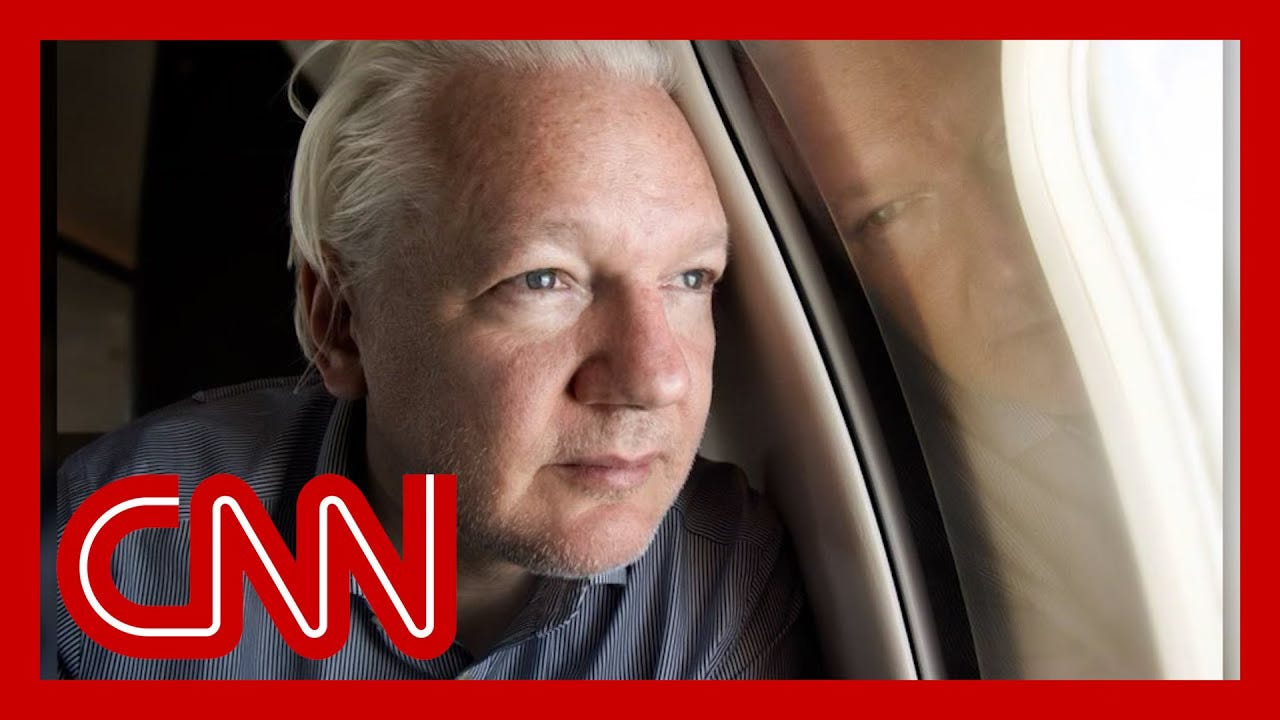After nearly two decades on and off the run, Julian Assange has finally been convicted—in a plea deal that is sending him to Australia and freedom. The outcome presents a crushing defeat for the security organs of the U.S. government, especially the CIA, which floated plans and hatched plots to kidnap and even murder the Wikileaks founder, especially during the the tenure of the Trump administration’s spy agency director, Mike Pompeo.
All that was detailed in an astonishing piece by Zach Dorfman, Sean D. Naylor and Michael Isikoff for Yahoo News in September 2021.
Dorfman, now reporting and producing an investigative intelligence podcast for Project Brazen, a national security oriented news site, called attention to the piece on his X account Tuesday, adding that the CIA’s sordid secret history of trying to neutralize the leaks-channeling operator was behind the Biden Justice Department’s decision reduce the charges against him to one count of violating the Espionage Act, and dispatch him to his native land, Australia.
“During the Trump administration, even many harsh critics of Assange, who wholeheartedly supported prosecuting him, thought Pompeo’s extraordinary rendition plots foolhardy in the extreme, and probably illegal. They also—critically—thought it might harm Assange’s prosecution,” Dorfman wrote. Plans included breaking into the Ecuadorian embassy in London, where he was holed up for seven years, and “renditioning” him to the U.S. like a terrorist, or blocking Russian attempts to smuggle him out of the U.K., even if it required gun battles in the streets of London.
Justice Department lawyers and other Trump national security officials called the violence-crammed thought bubbles basically insane, the then-Yahoo reporters wrote in 2021. It would make prosecuting Assange impossible for several obvious reasons, not least of which was the fact that press freedom advocates were already making a stink about prosecuting someone for publishing leaks—something the mainstream press did all the time—a right enshrined in the 1971 Pentagon Papers case.
“Former Trump administration and US intelligence officials directly engaged in discussions about Assange argued strenuously that, should Pompeo’s and CIA’s plans come to light, it could make the discovery process nightmarish for the prosecution, should Assange ever see trial,” Dorfman wrote Tuesday, referencing the 2021 Yahoo piece.
“Moreover, and relatedly, some Trump administration officials had deep reservations about the legality of prosecuting Assange after the proposed rendition of the WikiLeaks founder from the Ecuadorian embassy was to be carried out.”
All this would have come out in a trial, he persuasively predicted. Apparently nobody among the Biden administration’s national security officials wanted that.
“What, if any, consideration Biden DOJ officials gave to the difficulties in prosecuting Assange because of the very aggressive—and even some Trump administration officials believed—illegal, unethical, and self-defeating proposals re: the Wikileaks founder—could be revealing,” Dorfman tweeted. It’s a near certainty that reporters who closely cover the White House and Justice Department will soon add more details on the three-way transaction with the U.K. and Australia to set him free after crediting him with time served.
After 20 months in the U.K.’s Belmarsh prison, Assange flew toward home Tuesday, landing in Saipan, in the U.S. territory of the Northern Mariana Islands, for a court hearing to plead guilty to one count of obtaining and disclosing classified information. In the deal, the U.S. dropped 17 other espionage charges against him.
Those charges were “not about Moscow’s covert efforts to help Donald J. Trump win the 2016 election,” the New York Times’ veteran national security legal analyst Charlie Savage wrote Tuesday. “Rather, the charges centered on the earlier publications that vaulted him to global notoriety and made him a hero to the antiwar left: a video of a U.S. helicopter gunning down people in Baghdad, including a Reuters photographer; troves of military incident logs documenting the Afghanistan and Iraq wars; a quarter-million diplomatic cables from U.S. embassies around the world; and dossiers about Guantánamo detainees.”
Assange, now 52, eluded capture for years by donning disguises and adopting extreme security measures, wrote two New York Times reporters who met him in an Ethiopian restaurant in London in October 2010.
“Julian Assange moves like a hunted man,” dying his hair, moving from hotel to hotel under false names, sleeping on supporters’ floors and sofas, using cash instead of credit cards, they wrote. He was swapping out burner phones “the way other men change shirts.”
He’s safe for now, but it’s quite likely he’ll be looking over his shoulder for the rest of his life—especially if Trump returns to the White House. ###
Michael Isikoff, who has also worked for the Washington Post, Newsweek and NBC News, is a SpyTalk contributing writer and co-author most recently, (with Daniel Klaidman), of Find Me the Votes: A Hard-Charging Georgia Prosecutor, a Rogue President, and the Plot to Steal an American Election. Sean D. Naylor, a prolific national security investigative reporter, is the author, most recently, of Relentless Strike: The Secret History of Joint Special Operations Command. He writes the Highside newsletter on Substack.
SpyTalk is a reader-supported publication. To receive new posts and support our work, consider becoming a free or paid subscriber.


